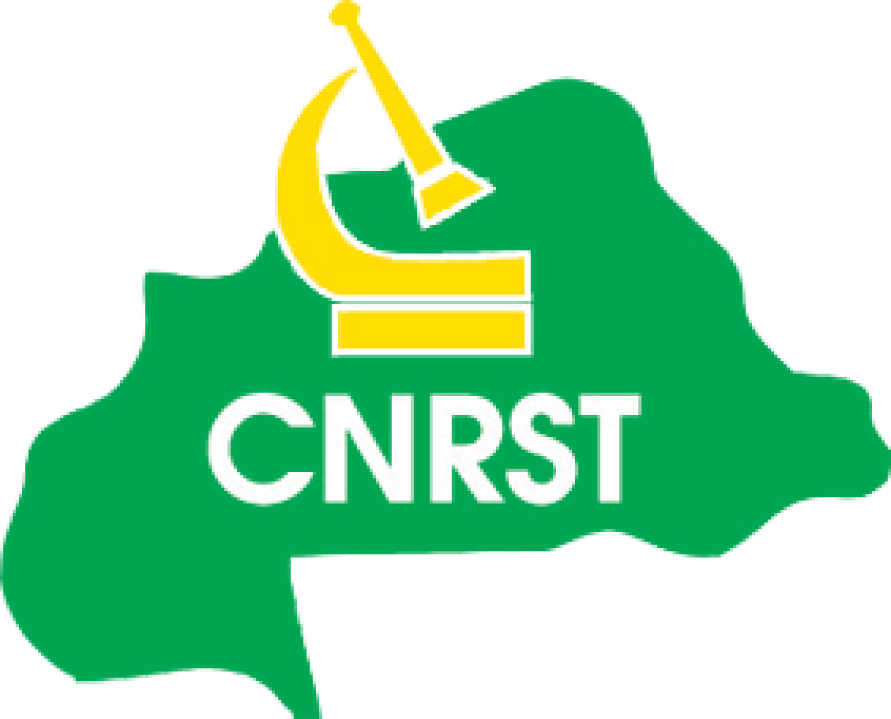We are INERA
"Institut de l’Environnement et de Recherches Agricoles du Burkina Faso"Historical
"Institut de l’Environnement et de Recherches Agricoles du Burkina Faso" (INERA) is part of the fourth specialyzed institutes of "Centre National de la Recherche Scientifique et Technologique" (CNRST). It is in charge of agricultural and environmental studies and research in Burkina Faso. Its history can be summarized as follows:
- 1960-1978 : Research activities are carried out by the French institutes IRAT, IRCT, IRHO, CTFT,
- 1978 : Creation of "Institut de la Recherche Agronomique" (IRA)
- 1981 : Creation of "Institut Voltaïque de Recherches Agronomiques et Zootechniques" (IVRAZ) and "Institut de Recherche en Biologie et Ecologie Tropicale" (IRBET);
- 1988 : IVRAZ become "Institut d’Etudes et de Recherches agricoles du Burkina Faso" (INERA) ;
- 1996 : Creation of "Institut de l’Environnement et de Recherches agricoles du Burkina Faso" (INERA) from the merge of "Institut d’Etudes et de Recherches Agricole and of Institut de Recherche en Biologie et Ecologie Tropicale".
Missions and attributions
- To serve as a framework for programming and implementing research programs in the agricultural and environmental fields;
- Provide to researchers the basis for supervision and support for their work;
- Provide to researchers the opportunities for their promotion;
- Contribute to information and training of researchers, support staff, students, and farmers;
- Serve as expertise framework ;
- Promoting research results;
- Setup production units
- Produce and market research products;
- Promote research oriented towards sustainable management of natural resources;
- Provide technical support for agricultural, environmental and forestry development, including through studies and project implementation monitoring;
- Decentralize and regionalize agricultural, environmental and forestry research with the aim of bringing research closer to its users and promoting optimal development of regional agricultural, environmental and forestry potential;
- Ensure the link between research and development, including the transfer of technologies and innovations to users.
Functioning
The functioning of INERA is based on:
- A direction
- Five Regional directorates of environmental and agricultural research(DRREA) ;
- Environmental, Agricultural and Training Research Center(CREAF) of Kamboinsé ;
- Four scientific departments comprising 18 programs and one National Center of Specialization in Fruits and Vegetables (CNS-FL).
- Management organization
- Environmental, Agricultural and Training Research Center(CREAF) of Kamboinsé and Regional directorates of environmental and agricultural research(DRREA)
- Center sub-direction, headquarter Saria (Koudougou) ;
- East sub-direction, headquarter Kouaré (Fada-Ngourma) ;
- North-West sub-direction, headquarter Di (Tougan) ;
- West sub-direction, headquarter Farako-â (Bobo-Dioulasso) includes two secondary stations (Niangoloko and Banfora), eight branches (Balla, Dindéresso, Vallée du Kou, Sindou, Djiguèra, Houndé, Dano);
- Sahel (North) sub-direction, headquarter Katchari (Dori)
- Research programs and departments and the National Center of Specialization in Fruits and Vegetables
- Department of Natural Resources Management / Production Systems (GRN/SP) : It includes 5 regional research programs: GRN/SP-Centre, GRN/SP-West, GRN/SP-North-West, and GRN/SP-Sahel;
- The Plant Production Department (DPV): It also includes 6 research programs: Cereals, Oleaginous and Leguminous Plants, Vegetable Crops, Rice and Rice-growing, Cotton and Textile Fibers, Tuber Plants;
- Animal Production Department (DPA): It includes 3 research programs: Ruminants, Monogastric and non-conventional farming, Livestock/Environment;
- Department of Environment and Forestry (DEF): It includes 4 research programs: Agroforestry and Improvement of Woody Plants, Wildlife and Fisheries, Development of Forestry, Management and Monitoring of Ecosystems.
- National Center of Specialization in Fruits and Vegetables (CNS-FL): Activities of the center are focused on three crops: Mango, onion and tomato. The CNSFL is headquartered at the Farako-Bâ station.
The diagram below illustrates the management organization

Research activities implementation and production places resulting from the division of the national territory into areas of decentralization of research on the basis of agro-ecological criteria.
Environmental, Agricultural and Training Research Center(CREAF) of Kamboinsé is the headquarters of the scientific departments and the central support laboratories and services.
In addition to CREAF, INERA has five (5) sub-directions :
Eighteen research programs are carried out within four research fields or Departments:
The Departments, Programs and the National Center of Specialization in Fruits and Vegetables are programming, coordination, execution, scientific management and development units.
The central laboratories, the Macro-Economy and Sector Economy Unit and the Remote Sensing and Geographic Information System Unit are support tools assigned to the Scientific Departments and the National Center for Specialization in Fruits and Vegetables. They are based in Kamboinsé.
Organization
INERA has advisory and management bodies to involve farmers, developers and political policies-makers in the management of its activities:
Scientific and management advice
He is responsible for:
- Assessing the relevance of research activities;
- The discussion and validation of the proposals of the program commissions;
- Analysis of the orientations of environmental and agricultural research;
- Review and assessment of activity programs and approval of related budgets;
- Ensure the adequacy between the priorities of the research and the ressource;
- Ensure the integrity of the technical, administrative and financial management of the institute.
The executive committee
Its role is to:
Technical committees
The program commissions
These are planning board:
Management and valorization tools
These tools are
Resources
- INERA's human resources consist of six (06) types of personnel:
- Research staff;
- Research assistants
- Research engineers;
- Technical support staff;
- Administrative and management staff;
- Research technician
- Civil servants ;
- CNRST permanent contract agents;
- The contractual agents of the Institute's projects;
- Technician
- Fund resources :
- National budget
- Various agreements and subsidies;
- Income from contracts and miscellaneous services.
- INERA's material resources consist of movable and immovable property (buildings, land, vehicles, acquired scientific equipment, etc.).
These six (06) types of staff are divided into four (04) categories of agents:
